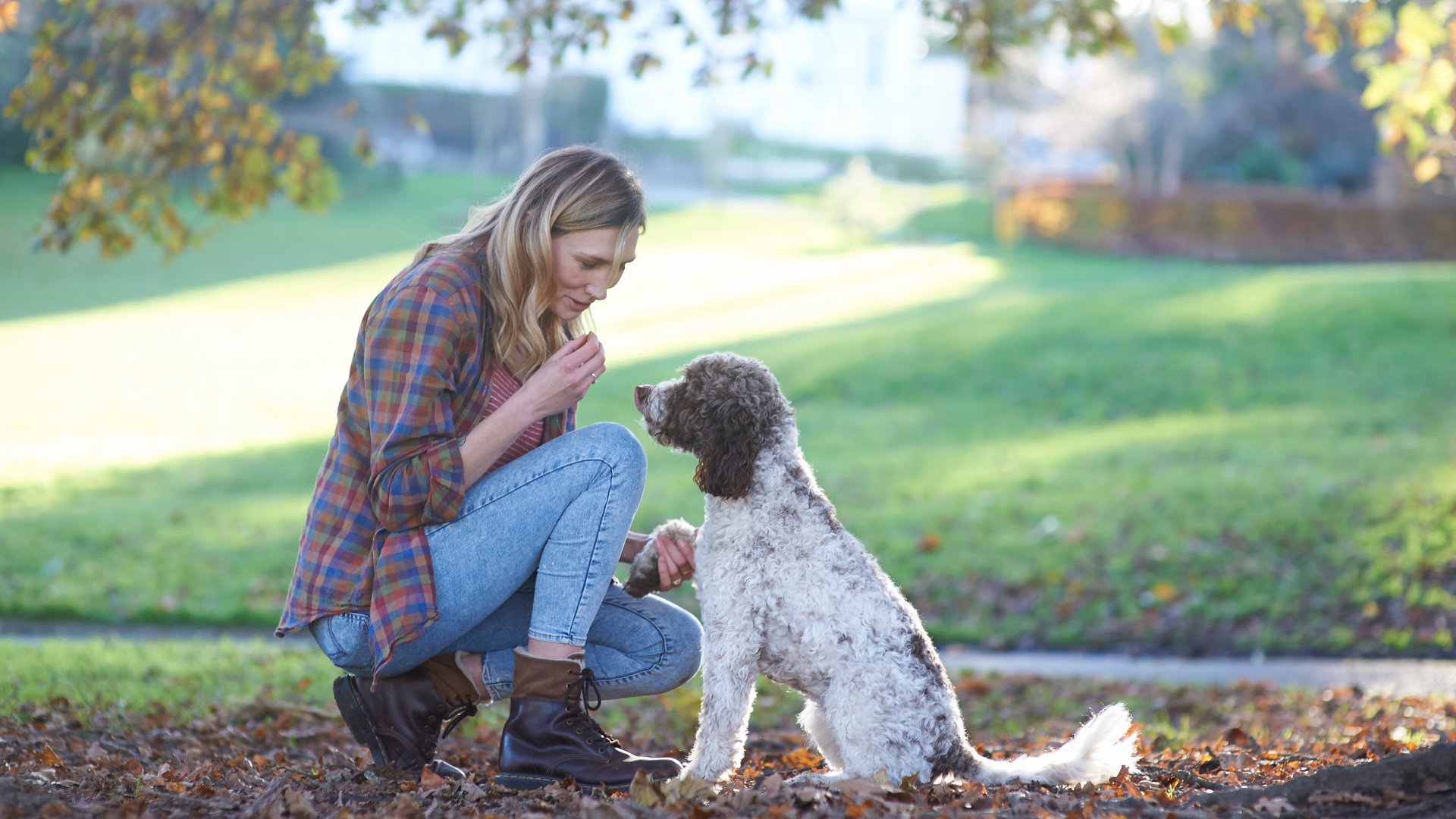
If you're anything like most pet parents, getting your dog to behave well and do what you ask them to do can sometimes feel like a challenging task.
Having a solid routine in place and always keeping a bag of the best dog treats close by can certainly help when it comes to improving your dog's obedience and rewarding good behavior, but did you know that how you deliver rewards also matters?
It's true! According to expert dog trainer Julianna DeWillems, being aware and thoughtful about your reward delivery can make a huge difference when it comes to how successful your dog is with learning new behaviors and skills.
"Where and how you reward your dog can impact the behavior you're trying to train," explains DeWillems.
In a video shared on Instagram, DeWillems uses teaching the 'down' cue as an example.
"Many dogs will lie down into more of a sphinx position where they're ready to pop right back up after being given a treat but if cue 'down' and then deliver the treat to the dog's side over by their shoulder, the dog starts to roll over onto their hip."
As DeWillems explains, she's not giving an additional cue to get the dog to go over onto their hip, she's just strategically placing her treat in a way that elicits that position from the dog.
"Behavior goes where reinforcement flows, so pretty quickly she'll start to associate the settled hip position with the 'down' cue and will offer it when I say 'down'.
Noticing what behavior is happening when your dog receives and eats the treat can give you insight into what behavior is likely getting stronger - regardless of what you're intending to teach."
DeWillems goes on to say that while she uses markers like 'yes' or a clicker to mark the exact behavior she wants, what occurs in the time between the marker/clicker and when the dog eats the treat can impact the behavior you end up with.
"If your dog is struggling to pick up a behavior, consider if you can change your reward delivery to decrease confusion and make the goal behavior more obvious."
You'll find some great examples in the caption of DeWillems' Instagram post to help get you started and for more great training tips, check out our guides on how to crate train a dog and how to reduce separation anxiety in dogs.







